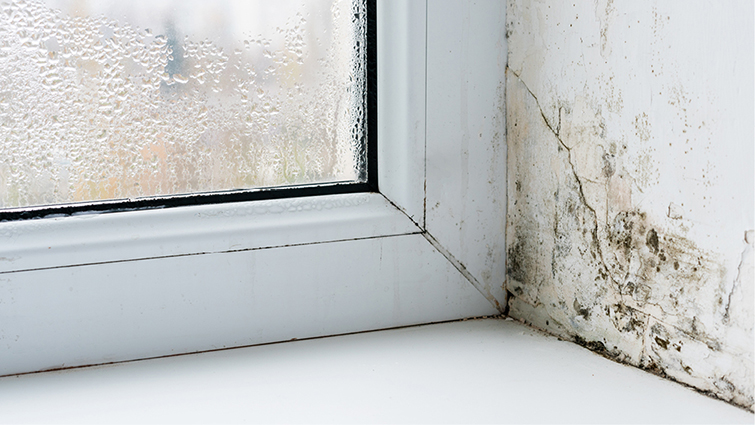Help to avoid damp and mould in your home
Published: Wednesday 1 October 2025

Risks stemming from excess condensation in your home, such as damp and mould, is heightened during the coldest months of the year.
It is mostly found in rooms where large amounts of moisture are produced, such as kitchens or bathrooms, as well as in rooms which are unheated.
Common signs of damp and mould include windows steaming up, mould growth on window frames and on walls and ceilings.
The council takes a proactive approach to dealing with reports of damp and mould in tenants’ homes and is committed to dealing with these quickly and effectively. Our services will manage all reports of dampness and mould from when the concern is first reported, until the relevant advice is provided or any required works are completed.
The Scottish Housing Regulator recently produced new guidance for social landlords to ensure that a consistent approach is taken to dealing with damp and mould in domestic properties. Separately, new legislation has recently been passed by the Scottish Government which will help to provide greater protection to tenants against issues of disrepair, including damp and mould.
In response to the new regulatory guidance and in anticipation of any new requirements arising from the legislation, the council is currently reviewing its’ approach to ensure that as a landlord, we are well prepared to respond to any new requirements. This includes considering new ways to mitigate damp and mould including, enhanced systems of ventilation, installation of environmental sensors and enhanced inspections.
Further information and advice for tenants on how to deal with damp and mould is available on the council’s website.
If you have any concerns at all about condensation, damp or mould within your home, please report this to Housing Repairs on 0303 123 1010.
If you are finding it difficult to heat your home, there is help is available. To find out more, contact your local Housing Office on 0303 123 1012.
9 December 2025
Crosshouse Primary is top of the class with inspectors
5 December 2025
Award recognises approach to tackling fuel poverty
4 December 2025
Children hear of Hollywood career with its roots at their own school
4 December 2025
Encounter at the dawn of the ’60s led to 60 years of marriage
3 December 2025
First nest houses land at new homelessness village
3 December 2025
Radical changes on way for East Kilbride town centre
2 December 2025
More council homes on the way in Hamilton
2 December 2025
Transforming gyms to help transform you
1 December 2025
Bridge inspection and road improvements on way
1 December 2025
Support for Ukraine continues















